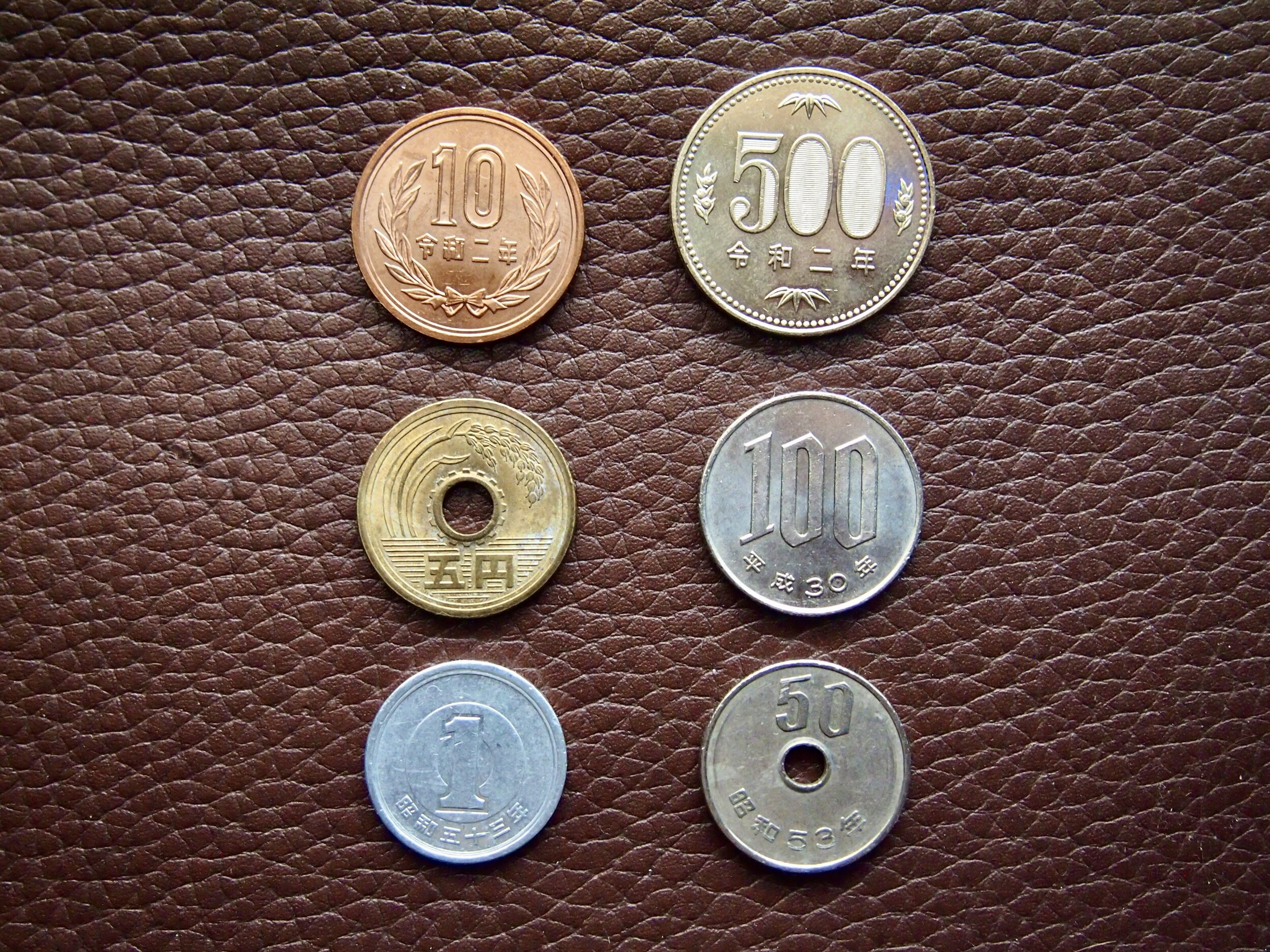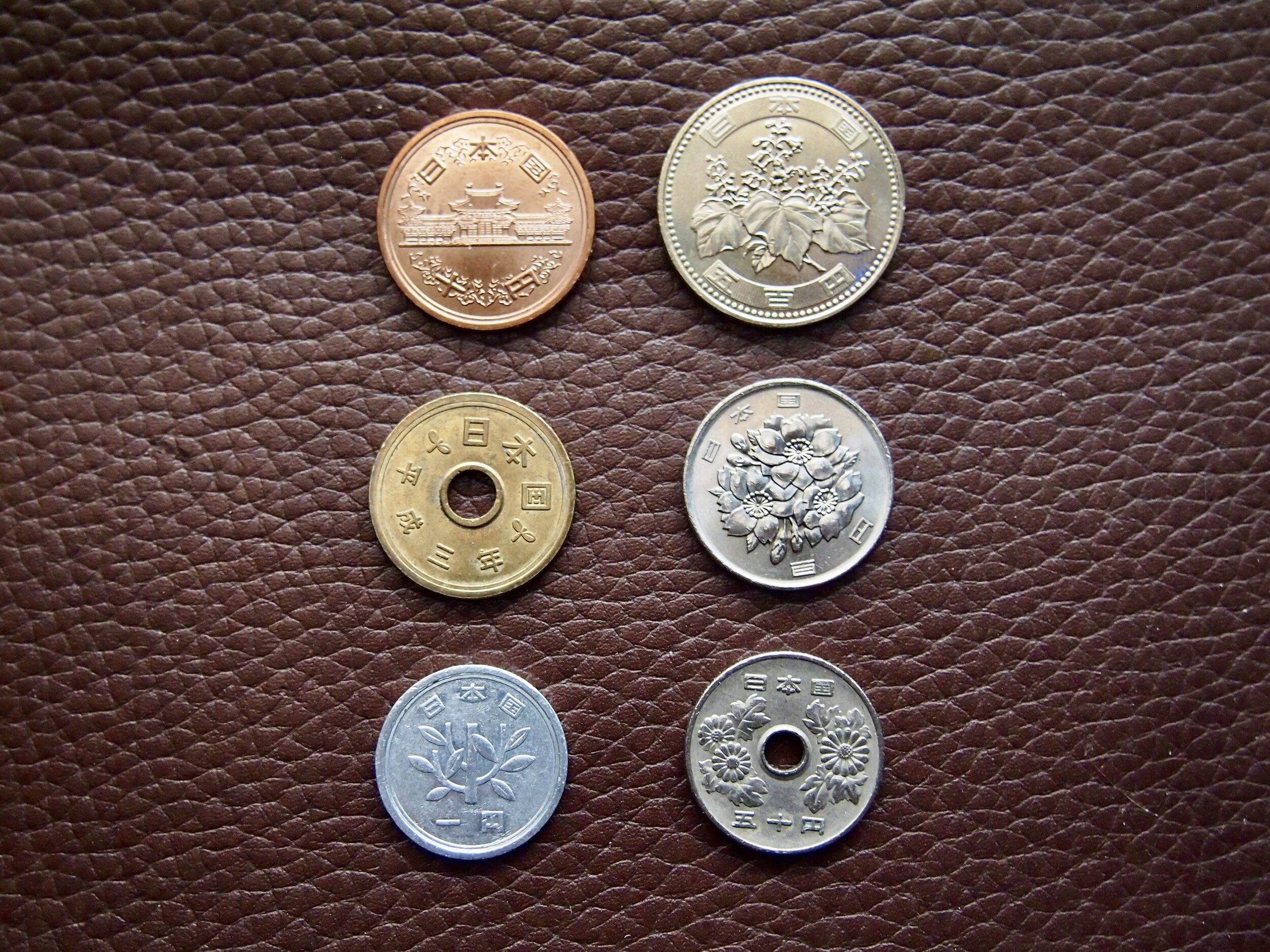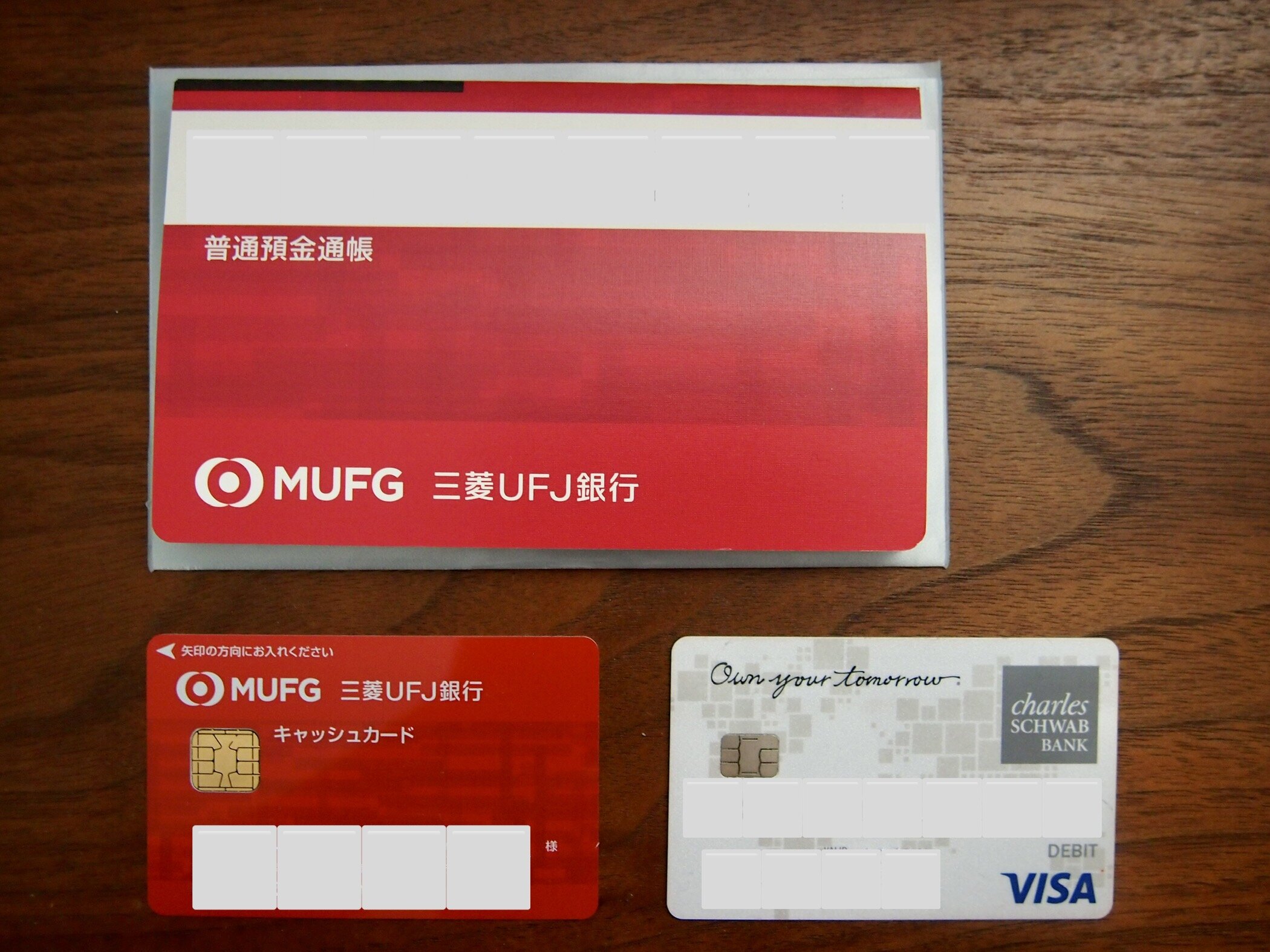Money in Japan, Part I: The Coins
This post contains affiliate links. For more information, please read our affiliate disclosure.
A cash-based society but only sometimes: coins in Japan
Today marks the start of a new series on money in Japan. Travelers from the US may be used to using credit and debit cards for everything, but money in Japan, much like many aspects of their society, is technologically advanced in some places while woefully behind in others. Some shops and restaurants will allow you to use a credit card, but there are many establishments that are still cash-only. You’ll need to get to know the different kinds of money and where they can be useful.
We start our guide off with THE COINS:
In the US, coins are largely extraneous, to the point where you’d rather dump them in the take-a-penny tray or leave them as part of your tip than take them with you. Their uselessness is also why we love cash-free transactions, because we don’t have to carry coins around. But in Japan, since there are so many cash transactions, you’ll end up getting a lot of coins, and you’ll need them for certain things that we’ll explain below. You also don’t need to tip, so you’ll have to take them away with you, and will end up with a lot of change by the end of your trip. To cart around all this money, I carry one of these babies in my pocket:
That’s right, a change purse. I carry a purse like Kirk Van Houten. It’s useful.
One day, we’ll do a post on the best coin wallets on Amazon. However, that day is not today.
Where can you pay with coins in Japan?
Video games, vending machines, and train ticket kiosks all take coins, which is why it’s useful to have them around. And if you’re some sort of sicko who wants to subject yourself to pachinko, you’ll need coins to do that as well. Most of these situations, you can also use paper money, which we’ll cover in the next installment. But hopefully I’ve hammered home the idea that you should plan ahead to use a lot of cash in Japan, and that you’ll likely be carrying around a pocket full of change at all times.
Let’s examine the various coin denominations, how much they’re worth, and their uses.
Types of coins in Japan
The big gold one is the 500-yen coin. This is the one you want to hold onto. A yen is worth a little bit less than a penny, but for simplicity’s sake, I think of 100 yen as 1 dollar. That means this is a five-dollar coin. You’ll want to make sure you don’t lose track of these since their value can add up.
Editor’s note: Eriko tells me that 500-yen coins are actually silver, and they just look gold when they’re dirty. Maybe she’s trying to trick me. I don’t know. But that’s what she says.
The 100-yen coin, worth around a dollar ($1.60 in 2024!), is the most useful. Drinks in vending machines generally cost between 100 and 200 yen. Video games are usually 100 yen a play, as is pachinko. Any train ticket will be at least 100 yen, so you’ll need as many of these as you can get your hands on. Due to the fact that there are $1 and $5 coins, the bills start at $10. That means any time you spend less than $10 and pay with a bill, all your change will be in coins. Hence the need for a coin wallet.
The 50-yen coin is the same color as the 100, but it’s smaller and has a hole in the middle. The hole is useful if you’re digging around in your pocket and trying to find the right denomination. While smaller than the 100, it’s not smaller enough to avoid mistaking it for a 100 when glancing down at a big mess of coins. I wish it were a different color or shape so I wouldn’t accidentally put it in the train ticket machine thinking it’s a 100 and then stand there like an idiot wondering why my ticket hasn’t come out.
Americans are used to coins of 50 cents, 25 cents, and 10 cents, but in Japan, there is no 25-yen coin. This results in the use of a BUNCH of 10-yen coins, which will likely fill up your pocket or coin wallet quickly. They’re useful in vending machines, so burn them all on a Pocari Sweat or C.C. Lemon when you get the chance.
The five-yen coin is thin, lightweight, and has a hole in it like the 50. The one-yen coin is flimsy and tiny. These two coins are completely useless in every way. You can’t use them at train ticket kiosks. No one wants them. Your coin wallet will fill up with them until you decide to take the time to count them out in groups of 10-50 and pay with them at the konbini. Avoid these at all costs.
That’s it for our rundown of coins in Japan. Up next in part two of our guide to Japanese money, we’ll be talking about paper money, AKA bills, including why you shouldn’t use the word “bill” while in Japan. Stay tuned for more hot Japan tips!
2024 Update: We now live in Tokyo. In Tokyo, most businesses now take credit cards, including touchless technology where you just boop your card up against the deal. This eliminates the need for cash and coins in many situations. Trains in Tokyo use paper tickets, but you can also get a reusable Suica Card and fill it up with bills every now and then. This eliminates many of the other needs for coins.
If you’re visiting Tokyo, use a Suica Card, and have a credit card with no foreign transaction fees, the only reasons to carry coins are vending machines and the rare souvenir stand or small shop that only takes cash. They exist, but there aren’t as many of them. But if you’re traveling outside of Tokyo, especially if you’re visiting small towns, be prepared to use cash more than you’d like.
If you’re going to be traveling by train a lot throughout Japan, consider getting a JR Pass. This is a pass that gives you unlimited train travel within Japan for a certain period of time. That way, you won’t have to worry about whether you’ve brought enough cash to buy train tickets to all the places you want to go. If you hear about a cool city or festival, you can just hop on the train and go there. Depending on your plans, it could also save you money!



























